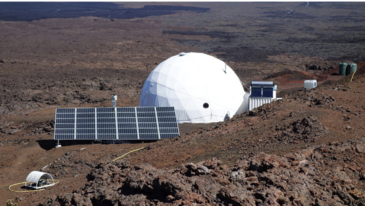Christiane Heinicke, Lucie Poulet, Jocelyn Dunn, Anne Meier
Acta Astronautica 182 (2021)
doi: https://doi.org/10.1016/j.actaastro.2021.01.049
Analog environments for simulating aspects of spaceflight are being utilized for studying the psychological effects of the projected journey to Mars. In 2016, a series of three analog missions concluded at the Hawaii Space Exploration Analog and Simulation (HI-SEAS) facility. Three crews, each with six volunteers per mission, completed consecutive missions of increasing duration, simulating the isolation and confinement of a Mars exploration mission. The durations of the analog missions were 4 months, 8 months, and 12 months, respectively. In this paper, former crew members of these three missions compare how each crew organized their schedules with regard to work routines and social activities. We outline group-living habits that evolved similarly in the independent crews, and we discuss where social norms differed, leading to idiosyncratic policies for group-living during each mission. This information may serve as a reference to mission planners of both simulated and actual human spaceflight missions and also offers insights for psychology researchers that could motivate future studies of team cohesion and performance.
© 2021 The Authors. Published by Elsevier Ltd on behalf of IAA. This is an open access article under the CC BY-NC-ND license

